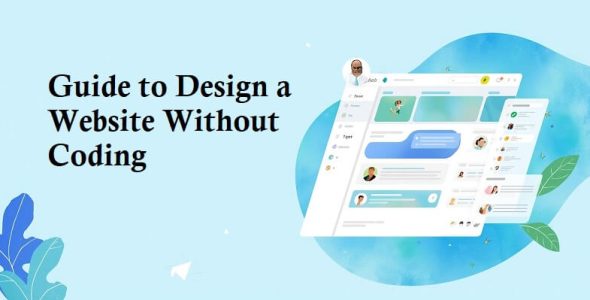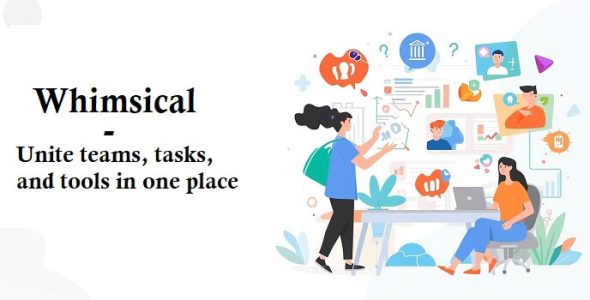Best Free Web Design Tools for Beginners in 2025
Web design has never been more crucial than it is in 2025. Companies, personal brands, and content creators alike require websites that look professional, load quickly, and provide an exceptional user experience. Fortunately, you don’t need to be a coding expert to create an impressive website. With the Best Free Web Design Tools for Beginners, anyone can easily design stunning, functional websites without advanced technical skills.
This piece investigates the top free web development tools for beginners in 2025, ranging from website creators to graphic design sites, coding editors, and prototyping tools, among others. Whether you’re designing a first-time personal portfolio or launching an online business, exploring free WordPress themes for graphic designers can also help you create visually appealing and professional websites with ease.
Why Free Web Design Tools Matter for Beginners
When you’re beginning, spending money on costly software such as Adobe Creative Cloud can be daunting. Free resources enable you to:
- Try web design with no cost attached.
- Develop important design skills at your own pace.
- Make use of easy-to-use platforms that do not need you to realize the way to code.
- Create expert-general sites with templates and drag-and-drop skills.
- Grow later into paid plans once you are familiar.
By 2025, most free software has become so sophisticated that newbies can create responsive, contemporary websites without ever writing a single line of code.
Types of Free Web Design Tools
Before entering into character equipment, permit’s categorize them:
- Website Builders: Tools used to build whole web sites with templates and drag-and-drop capability.
- Graphic Design Tools: Sites to create banners, logos, and net pics.
- Prototyping and Wireframing Tools: For developing layouts previous to building the real internet site.
- Code Editors: Light-weight editors for humans trying to analyze HTML, CSS, or JavaScript.
- UI/UX Design Tools: For designing person-friendly interfaces and interactive prototypes.
- Collaboration Tools: Tools that enable teams to design websites collaboratively.
Now, let us see the top free tools in each category for 2025.
Best Free Website Builders for Beginners
1. Wix (Free Plan)
Wix is one of the most commonly used platforms for newbies in 2025. Its drag-end-drop interface, more than a hundred free templates, and integrated layout equipment make it easy to create any internet site-private portfolio, blog, or small enterprises.
- Strengths: Highly beginner-pleasant, cell-pleasant templates, loose web hosting.
- Weaknesses: Free account has Wix advertisements and restrained storage.
2. WordPress.com (Free Plan)
WordPress.Com is bendy and scalable. Newbies can begin with drag-and-drop design and pre-designed themes, and advanced customers can ultimately try plugins and custom code later.
- Strengths: Huge library of themes, dependable web hosting, blogging functionality.
- Weaknesses: Free plan has limited customization; ads are shown.
3. Webflow (Starter Plan)
Webflow fills the middle ground between website builder and advanced coding. It’s ideal for newcomers who wish to create visually but also want to learn how websites are powered by code.
- Strengths: Visual editor directly linked to clean code, responsive design features.
- Weaknesses: Greater learning curve than Wix or WordPress.
4. Google Sites
Google Sites is easy but functional for beginners. Although it lacks sophisticated layout options, it’s ideal for transient websites, school assignments, or intranet team websites.
- Strengths: Free hosting, permits integration with Google Drive, easy to use.
- Weaknesses: Less design flexibility than the other builders.
5. Carrd
Carrd is a minimalistic website builder intended for landing pages and personal portfolios. Its free plan is easy but robust enough for single-page websites.
- Strengths: Simple to learn, mobile-responsive, clean templates.
- Weaknesses: Suitable for single-page websites, not complete business sites.
Best Free Graphic Design Tools for Beginners
6. Canva
Canva is the beginner’s favorite design tool in 2025. From logo and banner to the entire display, the canvas offers templates, even non-designer.
- Strength: Thousands of loose templates, drag-end-drop editor, Big photo library.
- Drawbacks: Some premium components ask for a paid plan.
7. Figma Free Plan
Figma is not only for UI/UX—it’s perfect for web visuals too. Newbies appreciate its free collaborative tools and browser-based interface.
- Strengths: Real-time collaboration, heavy vector editing, supports all devices.
- Drawbacks: Powerful features behind paid plans.
8. Gravit Designer
Gravit Designer is a free vector design tool that runs online or on desktop. It’s best for growing scalable images like logos and icons.
- Strengths: Cross-platform, novice-pleasant, helps superior layout.
- Limitations: Offline mode calls for Pro version.
9. Krita
If you need to add hand-drawn factors for your website, Krita is a loose virtual working software program perfect for beginners exploring innovative illustrations.
- Strengths: Excellent brush engine, free and open-supply, helps capsules.
- Limitations: Better used for illustrations than web designs.
Best Free Prototyping and Wireframing Tools
10. Balsamiq Wireframes (Free Trial)
Balsamiq is fine utilized by beginners who need to rough out website designs in a snap. Its hand-drawn aesthetic helps to keep the point of interest on shape and not on colors.
- Strengths: Simple interface, ideal for thinking out layouts.
- Limitations: Free trial only; subscription required afterwards.
11. Figma (Again)
Figma must be named again due to its robust prototyping capabilities. New users can create interactive layouts that mimic actual websites.
12. MockFlow
MockFlow offers basic wireframing and prototyping tools. It’s an excellent option for beginners looking to visualize site structure before switching to a website builder.
Best Free Code Editors for Newbies
13. Visual Studio Code (VS Code)
For a coder learning for the primary time, VS Code remains the top free editor. It’s light, customizable, and full of extensions for HTML, CSS, and JavaScript.
14. Brackets
Brackets is a free code editor, specifically for web development. It includes live preview so that beginners can see updates straight away.
15. Atom
Atom from GitHub is easy for beginners to use and open-source. Although not as robust as VS Code, it’s ideal for lightweight web projects.
Best Free UI/UX Tools for Newbies
16. Adobe XD (Free Starter Plan)
Adobe XD’s unfolded plan is in operation in 2025, providing inexperienced individuals underdeveloped prototypes and UI design functionality.
17. Figma (Third Mention!)
Its UI/UX features make it the most suggested free tool for web designers. Interactive prototypes, real-time editing, and newbie resources make it unmatched.
18. InVision Freehand
InVision Freehand is a collaboration platform for sketching ideas and wireframes. Newbies adore its ease while brainstorming sites flow.
Best Free Collaboration Tools
19. Miro (Free Plan)
Miro is an online whiteboard where teams collaborate to brainstorm and plan web design projects. Ideal for newbies who work in teams.
20. Notion
Notion assists newbies in organizing projects, design task tracking, and collaboration. Although not a design tool, it’s necessary for workflow management.
How to Select the Best Free Web Design Tool
Before choosing it, ask yourself:
- Do I choose a plug-end-play internet site builder (Wicks, WordPress, Carrd)?
- Do I want to supply portraits and visuals (Canva, Gravit Designer)?
- Do I desire to learn how to code (VS Code, Brackets)?
- Do I desire to research UX/UI design (Figma, Adobe XD)?
Choosing the right device relies upon your goals. Beginners often start with an internet site builder and Canva, then amplify to coding and Figma when they grow assured.
Tips for Beginners in Web Design (2025 Edition)
- Start Simple: Don’t overwhelm yourself with too much equipment right away.
- Learn the Basics: Understand shades, fonts, and layouts.
- Experiment with Templates: Modify them to match your imaginative and prescient.
- Mobile Design Focus: Make your website online look excellent on telephones.
- Use Free Stuff: Tutorials, YouTube tutorials, and communities abound.
Conclusion
Beginners in 2025 have more free web design software than ever. From Wix and WordPress for creating sites to Canva and Figma for design and prototypes, you can create beautiful sites without shelling out cash.
The optimum strategy is to begin with a free website builder and a graphic design tool, then venture into coding editors and prototyping tools as you expand. With endurance and gear, all people may be a web fashion designer by 2025.
FAQ: Free Web Design Tools for Beginners
1. What are the pinnacle loose net design tools for beginners in 2025?
Some of the nice loose internet design software for novices in 2025 include Figma, Canva, Webflow, WordPress with Elementor, and Grav. These portions of software have person-friendly interfaces, drag-and-drop functionality, and a few even help responsive net design without mastering a way to code.
2. Do I need to analyze coding so as to use those products?
Not in any respect! Platforms consisting of Canva, Figma, and Elementor allow you to design for the web with drag-and-drop functionalities without mastering code. But in case you’re operating with something like Webflow or Grav, you would possibly find a little HTML and CSS knowledge useful, however no longer vital for simple designs.
3. What’s the great device for collaborative layout?
Figma is extremely good for collaboration. It permits many individuals to work collectively at the same venture in actual time, so it’s incredible for teams or tasks that need feedback or co-operating across one-of-a-kind web sites.
4. Can I build a fully functioning internet site for the usage of those equipment free of charge?
Yes, alternatives which include Webflow and WordPress with Elementor have loose plans via which you may construct completely operational websites, however you may have regulations like having to apply a subdomain or limited capabilities. If you opt for a custom domain and additional capabilities, paid subscriptions are normally required.

 My Account
My Account 

